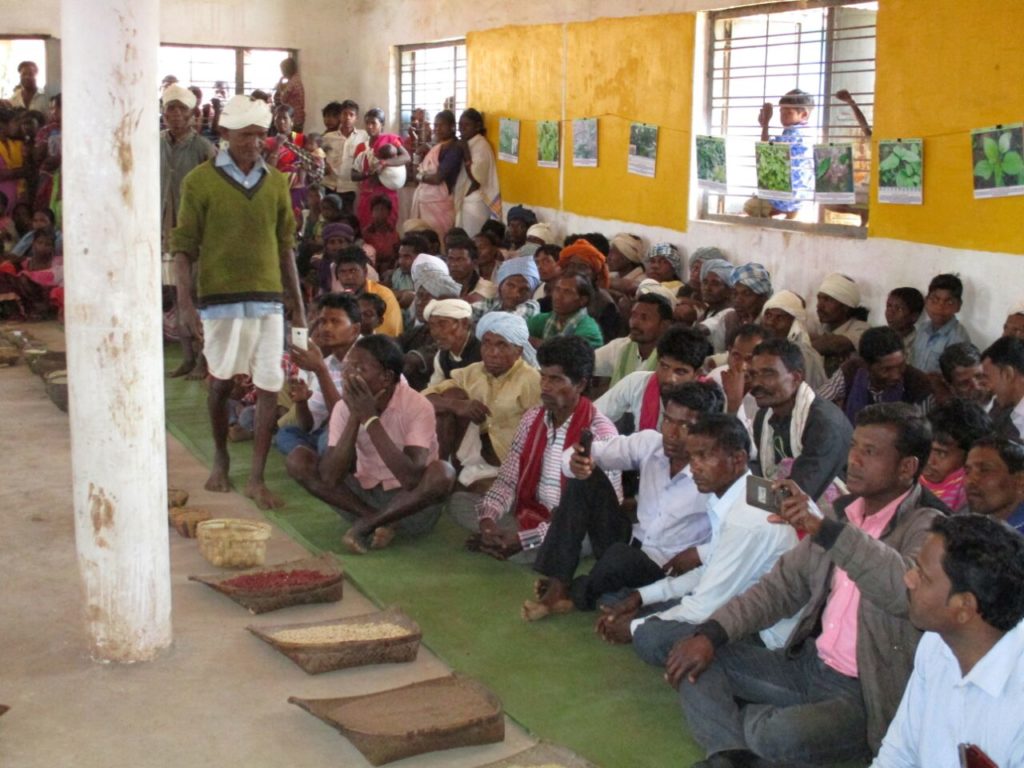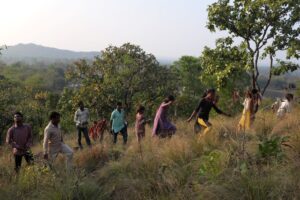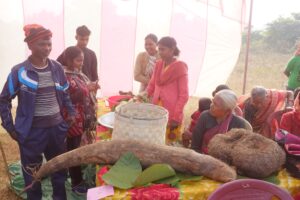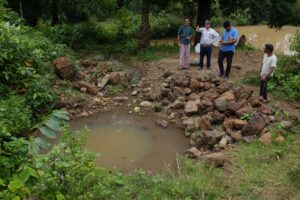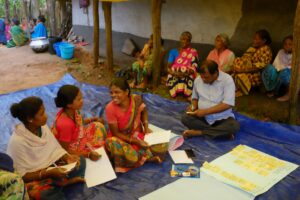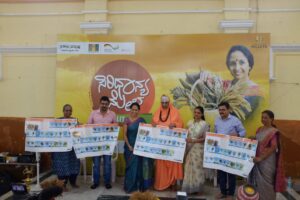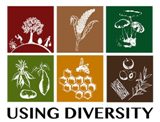By Naresh Biswas, Nirman Madhya Pradesh
In order to facilitate improved understanding of the Using Diversity (UD) project and its objectives among the UD fellows from Raigarh District of Chhattisgarh and Patalkot, Chindwara District of Madhya Pradesh and exposure visit was organised in Dindori District, Madhya Pradesh from 22nd to 26th February 2018. On this occasion, a traditional seed mela –“Beejon ki Rishtedari” was organised at Silpidi village of Dindori District. 200 Baiga women, men and community leaders from Baigachak’s Silpidi village and around 10 other neighbouring villages participated in the traditional seed mela. In addition to the UD fellows, Chiefs of the Baiga Tribe, representatives of Aastha Samiti and Gaon Bachaon Samiti of Kavardha District of Chhattisgarh, and Jan Swasth Sahyog of Bilaspur District were also involved in the “Beejon ki Rishtedari” program. The Deputy Chariman and Sarpanch of the District Panchayat of Dindori also attended the event.
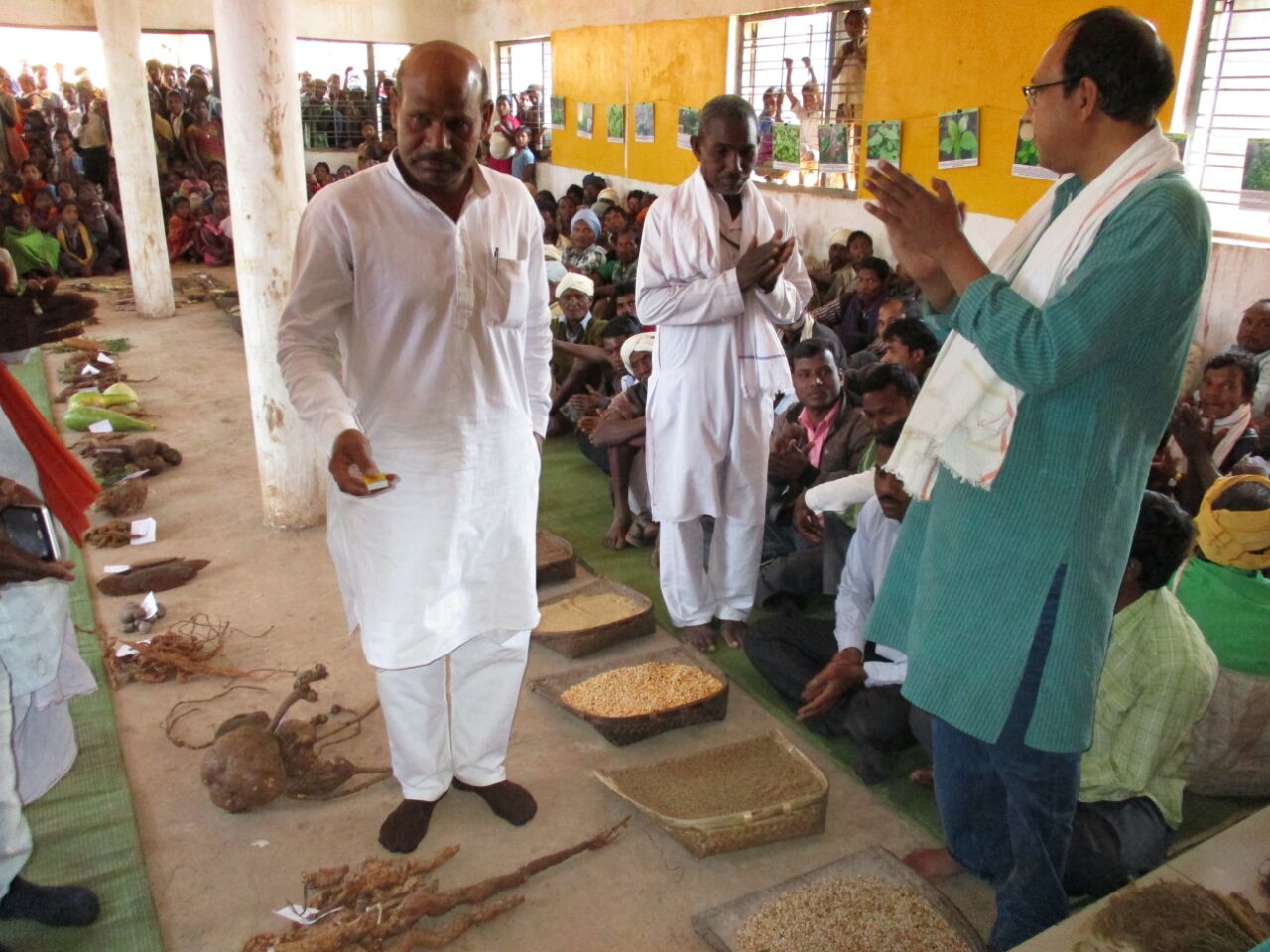
After the completion of the “Beejon ki Rishtedari” program, the representatives of the other organisations from Chhattisgarh returned to their respective districts. On 23rd February 2018, a meeting was held with the UD fellows in which they were provided detailed information about mixed cropping in Dindori district, documentation of Uncultivated food, and the work done in the region on the Habitat Rights issue as envisaged by the Forest Rights Act. After that under the guidance of Hiralal Sarote the UD fellows explored Gaura Kanihari, Ajgar and Silpidi villages and had discussions with members of the Baiga Mahapanchayat, the leaders of the Baigas’ traditional organisation and village residents through community meetings.
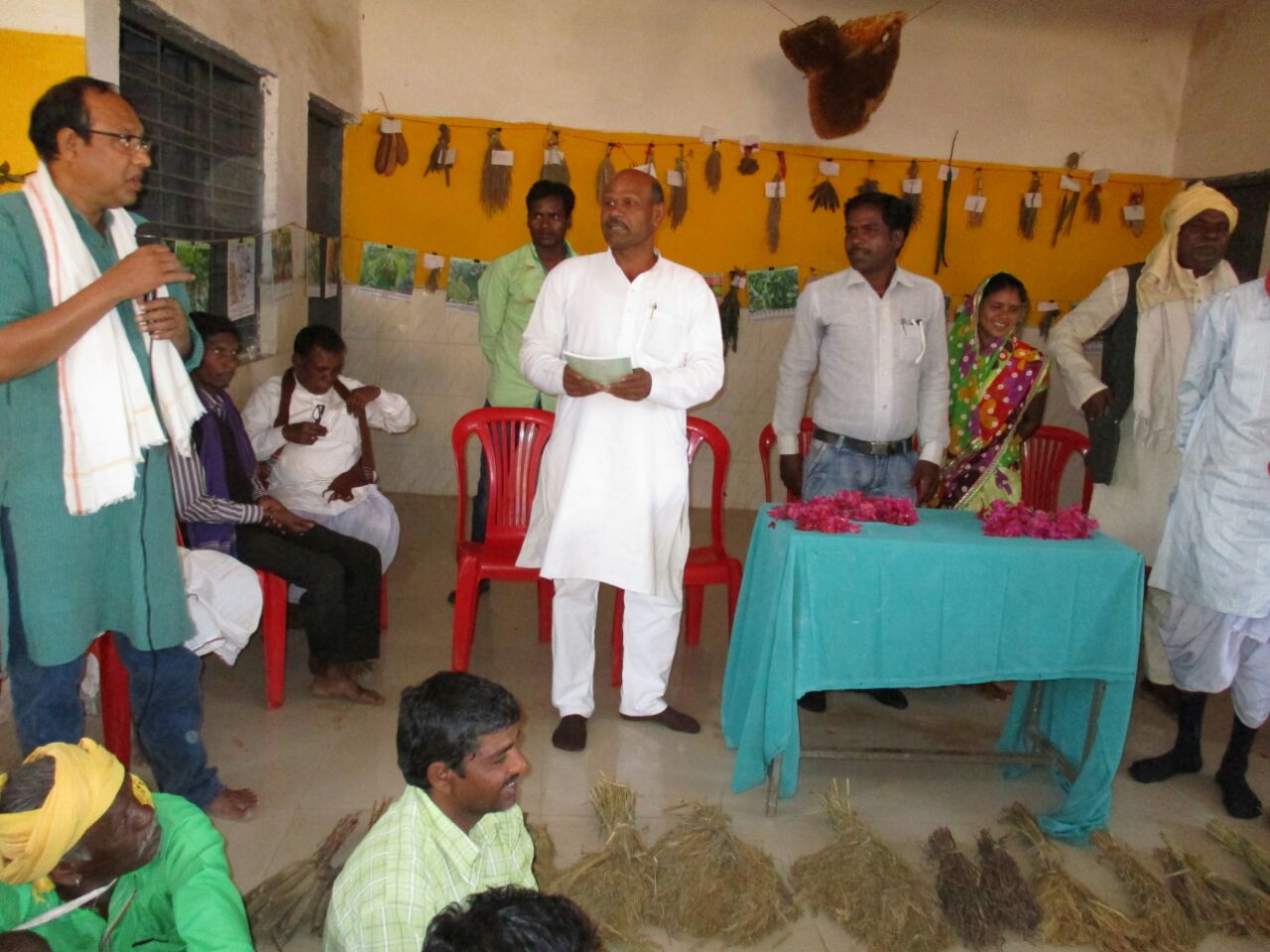
As part of the traditional seed mela indigenous seeds sown through the baigas traditional mixed cropping cultivation practice Bewar were on display in addition to a variety of uncultivated wild foods. The Pahari Korwa and Bhariya fellows from Raigarh and Patlakot respectively had also brought a few seeds from their areas as well. Jan Swasth Sahyog also displayed seeds from their area. The program ended with a seed exchange between participants from different areas.
Seeds and Wild Food on Display:
| Sr. No. | Traditional Seeds | Sr. No. | Uncultivated Food |
| 1 | Dongar Kutki | 1 | Ramjal Kanda |
| 2 | Nagdavan Kutki | 2 | Konjhiyari Kanda |
| 3 | Sitahi Kutki | 3 | Kaniha Kanda |
| 4 | Svnahi Kutki | 4 | Baichandi Kanda |
| 5 | Bhursa Kang | 5 | Rabi Kanda |
| 6 | Katki Kang | 6 | Birni Kanda |
| 7 | Lal Madia | 7 | Kochi Kanda |
| 8 | Kodo | 8 | Badain Kanda |
| 9 | Salhar | 9 | Kachar Kanda |
| 10 | Sathiya Dhan | 10 | Dindori Kanda |
| 11 | Badi Dhan | 11 | Dang Kanda |
| 12 | Chavtahi Kutki | 12 | Bhatua Bhaji |
| 13 | Bade Kodo | 13 | Munga Bhaji |
| 14 | Sawa | 14 | Bengcha Bhaji |
| 15 | Lal Makka | 15 | Kachar Bhaji |
| 16 | Safed Makka | 16 | Dobe Bhaji |
| 17 | Chote Kodo | 17 | Pipar Bhaji |
| 18 | Sikiya | 18 | Konjhiyari Bhaji |
| 19 | Jowar | 19 | Patharchati Bhaji |
| 20 | Rasani Kutki | 20 | Charot Bhaji |
| 21 | Bhadeli Kutki | 21 | Kachnar Bhaji |
| 22 | Urad | 22 | Kakoda Bhaji |
| 23 | Channa | 23 | Sarai Pihri |
| 24 | Kulthi | 24 | Lal Pihri |
| 25 | Chawla | 25 | Dokri Pihri |
| 26 | Ballar | 26 | Baichandi Pihri |
| 27 | Jhunjru | 27 | Kirora Phal |
| 28 | Rawas | 28 | Sihar |
| 29 | Baiga Rahar | 29 | Kachnar Phal |
| 30 | Lal Jhunga | 30 | Bhwar Chatta |
| 31 | Safed Jhunga | 31 | Dumar |
| 32 | Sikajyoti Madia | ||
| 33 | Khursa |
Outcomes:
- The baiga villagers were able to procure seeds of two types of Jhunjru from the Pahari Korwa and Bhariya fellows which had disappeared from Baigachak.
- The baigas received the seeds of two types of Bedra (Safed/White and Kala/Black) from the Bhariya fellow which had disappeared from Baigachak.
- The Baigas of Baigachak had only one type of Barbati which they call Khans. Now through the program the Baigas have received Chowla from the Bhariyas and Kutki Jhunga, Safed Jhunga and Lal Jhunga from the Pahari Korwas which are all different types of barbatti.
- In this manner the seed exchange facilitated by this program has helped increase the seed diversity of the Bhariyas, Pahari Korwas, and Baigas of Baigachak and Chhattisgarh.
- The new UD fellows from the Pahari Korwa and Bhariya project areas were able to acquire detailed first hand information about the activities of the UD project.
- Apart from Madhya Pradesh the other organizations from Chhattisgarh were also inspired by the different initiatives of the UD program, like the promotion of Traditional Mixed Cropping agriculture which is motivating them to work towards the promotion and protection of traditional seeds and agriculture in their respective regions.

